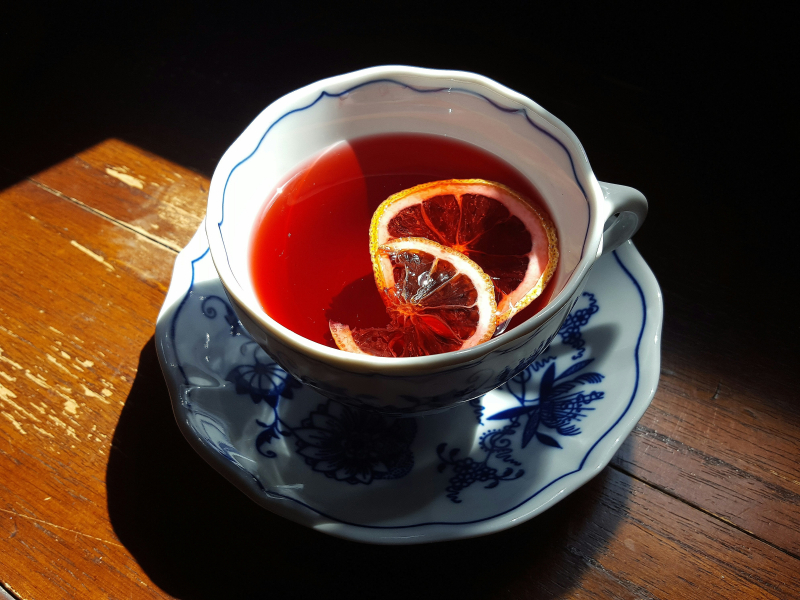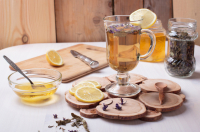The roots of tea in Russia
Such is the significance of this poignant drink in the local culture that one of our favorite educational portals, Arzamas Academy, has an entire article on the matter! You can read it in full (in Russian) by following the link, but here are its main takeaways:
- Tea first appeared in Russia in the 17th century as one of the novel goods imported from China. Tea trade was a dangerous business: back then, it was a highly expensive commodity that, unlike porcelain or fabric, could not be easily marked and then traced back in case it was stolen along the way. However, it was also as lucrative as it was dangerous, with many families building their capital on the trade.
- By the early 19th century, tea became ubiquitous, enjoyed by people from all walks of life. It was usually brewed using samovars – metal containers of distinctive design for heating and boiling water.
- Though far from the intricacy of Chinese tea ceremonies, tea drinking in Russia also had its rules and rituals. For instance, there was special serving etiquette that included, apart from a samovar, a tea set and specially made napkins to be placed under every saucer. Every evening, families would get together for tea served by such rules.
- Moreover, it was considered unseemly to serve tea “empty” – as in, without any snacks. Over the years, these included various pastries and candy, as well as pickled lemons and even pickled cucumbers!
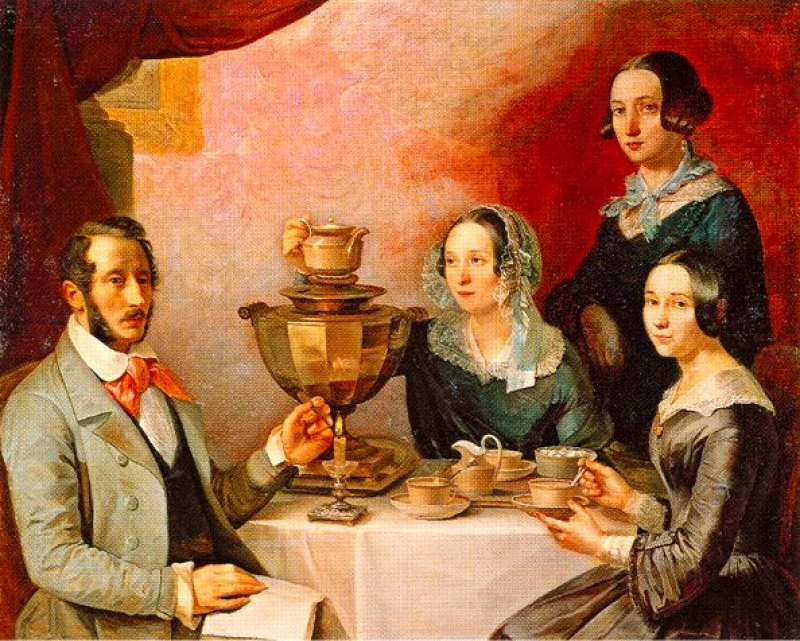
Timofey Myagkov. Family portrait. 1844. Canvas, oil. Credit: State Tretyakov Gallery, Moscow / Public Domain / Wikimedia Commons
Before “tea” – herbal teas and more
Before the “classic” tea came to Russia, the locals brewed their own warming beverages: vzvars, sbitens, and other drinks made from local herbs (believed to have various health benefits).
Vzvar and sbiten are typically sweet, as they include some combination of honey or other sweetener in preparation.
Herbal teas, on the other hand, are closer to the “classic” tea in terms of them involving dried leaves of various plants and trees (linden, currant, cherry, mint, apple, etc.) brewed in a teapot. Naturally, there are many varieties based on plants of different regions. Some popular choices are:
- Buckwheat tea – tastes like a dessert, especially if you add milk to it;
- Ivan chai – especially tasty with honey, has a distinct aftertaste;
- Sagan Dalya (Rhododendron adamsii) – hailing from the Far East, Tibet, and Siberia, this herb is believed to have all kinds of beneficial properties, from reducing stress to slowing aging. It’s even made it into research papers!
You can often find at least a couple varieties of herbal teas at local cafes – and sometimes, especially in winter, even vzvars and sbitens make it onto the menu.
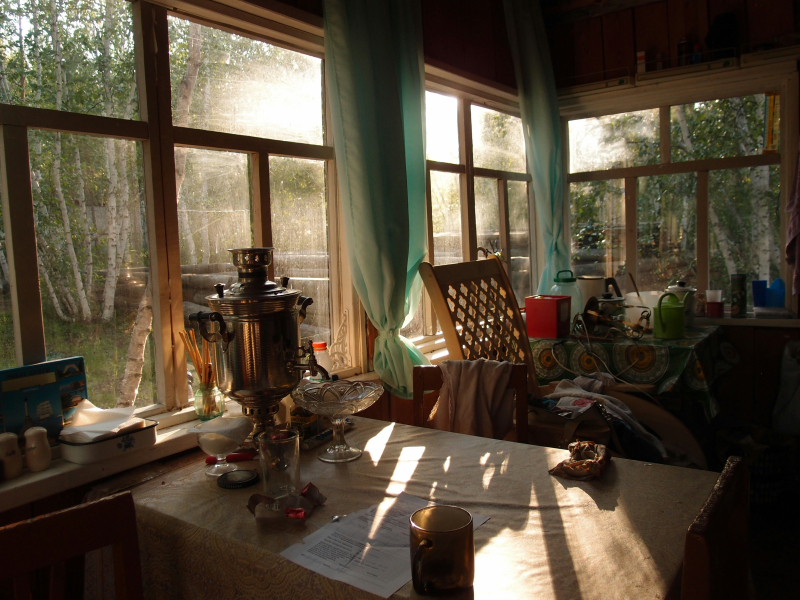
Samovar. Credit: Alina Makhatyrova (@tfcygv79) on Unsplash
Read more:
Tea-drinking in Russia today
Whatever the stereotypes say, the truth is, samovars are no longer a common household item, but rather something to be found in a museum. However, there are still some traditions that you could witness in local households:
- Tea bags are frowned upon, at least when you are entertaining guests. Usually, several teaspoons of loose tea are steeped in a special small teapot (during this process, it could be covered with a tea cosy to ensure it stays warm). Then, this strong tea (called zavarka) is poured into each cup and topped with hot water. In many homes, you’ll also be offered milk and sugar with your tea; however, it isn’t uncommon to drink it as-is.
- Many families still have porcelain tea sets, some already in the status of family heirlooms, that tea will likely be served in to the guest of the house.
- In terms of tea varieties, you can expect to find anything from “plain” black and green teas to more intricate blends bought at special stores.
These days, just like a century before, you can expect to have some sort of pastry, cookies, or even buterbrody when invited for tea. That’s why it’s also a good idea to pick up something “for tea” (к чаю – “k chayu”), when you are invited to someone’s house; this could be a couple of your favorite buns, some sweets, or, actually, the tea itself (see below for places to buy tasty blends).
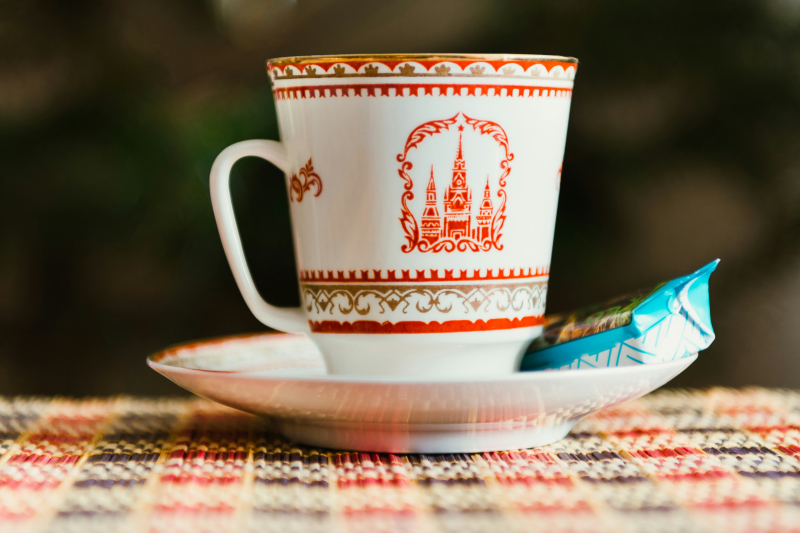
Credit: Sergei Maslennikov (@idefix) on Unsplash
Where to enjoy tea in St. Petersburg
Ounce (Untsiya)
Vladimirsky Pr. 1/47, Nevsky Pr. 63, and many more locations in the city
If you are craving something unique – a blend of “pure” tea or something infused with various herbs, berries, and spices, Ounce is the place to go. Just describe what you’re looking for to a consultant and be ready to experience enchanting tea smells from all over the world as they showcase them to you. As a bonus, it’s a great place to go to for gifts: their basic packaging is good, but they also offer gift tea boxes and all sorts of candy to accompany them.
Oh! My Tea
Come here for unique tea blends, as well as a freshly brewed cup made just for you. They make excellent matcha (hot and cold) and are one of the only places in town where you can savor authentic Moroccan mint tea.
Love you so matcha
Speaking of matcha, you can enjoy the tea itself served in an abundance of original drinks, as well as a selection of matcha-based desserts, from cakes to cookies, at this special corner at Vasileostrovsky Market.
ЧАЁК (Chayok)
If you are craving a Chinese-inspired tea ceremony, this tea shop and tearoom is the place to be: here, you can attend a workshop to learn how to brew various kinds of tea, or drop by for a full experience: with themed crockery and snacks.
Blackchops
From 4 pm to 7 pm Monday to Thursday, this steakhouse turns into a 5 o’clock tea mecca. Come here for a British tea experience, scones included!
Explore other peculiarities and staples of Russian culture in our recent comprehensive guide.
